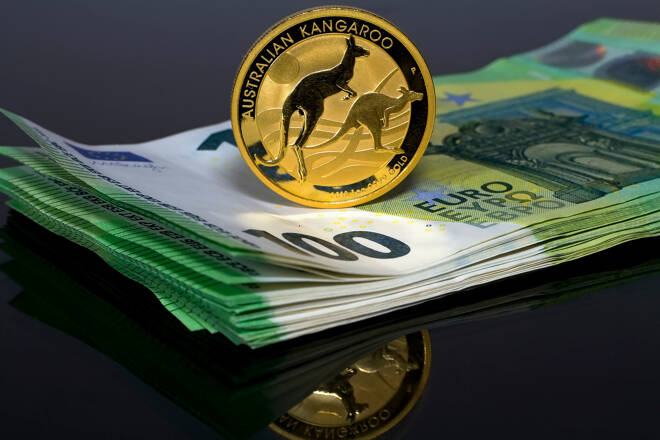Advertisement
Advertisement
AUD to USD Forecast: Australian Consumer Confidence Slides in November
By:
The RBA rate hike impacted consumer confidence in November. A downward trend in private consumption could materially impact the economy.
Highlights
- The AUD/USD gained by 0.29% on Monday, ending the session at $0.63763.
- On Tuesday, Australian consumer confidence figures reflected the impact of the recent RBA rate hike.
- The US CPI Report will likely dictate near-term trends for the AUD/USD.
Monday Overview of the AUD/USD
The AUD/USD gained 0.29% on Monday. After a 0.13% loss on Friday, the Aussie dollar ended the day at $0.63763. The Aussie dollar fell to a low of $0.63499 before rising to a high of $0.63913.
Business and Consumer Confidence to Send Mixed Signals
Westpac Consumer Confidence drew interest early in the Tuesday session. On Monday, the RBA Chief Economist Marion Kohler warned of testy times ahead. Elevated inflation may force the RBA to pursue a hawkish rate path to curb inflation.
Consumer confidence deteriorated in November, reflecting the impact of the recent RBA rate hike. In November, the Westpac Consumer Confidence Index decreased by 2.6% to 79.9. Economists forecast a 0.7% rise to 82.6.
A fall in consumer confidence could signal a downward trend in consumption. A negative consumption outlook would impact the economy but ease demand-driven inflationary pressures. Australian private consumption contributes over 50% to the economy.
However, a hawkish RBA rate path could further increase borrowing costs and reduce disposable income. The need for a hawkish rate path may affect consumer spending further.
Later this morning, the NAB Business Sentiment Index will also influence appetite for the Aussie dollar. Economists forecast the NAB Business Sentiment Index to fall from 1 to -1 in October.
A fall in business confidence may raise concerns. Deteriorating business sentiment could affect employment intentions. A weakening labor market would force consumers to curb spending.
US CPI Report and Fed Speakers in the Spotlight
Later today, the all-important US CPI Report will garner investor interest. Sticky inflation could force the Fed to take a more hawkish rate path to bring inflation to target. On November 9, Fed Chair Powell warned of potential rate hikes. A hotter-than-expected US CPI Report may raise bets on a December interest rate hike.
Economists forecast the US annual inflation rate to soften from 3.7% to 3.3%. However, economists expect the core inflation rate to hold at 4.1%.
A more hawkish Fed rate path would raise borrowing costs, impacting disposable income. A downward trend in disposable income could force consumers to curb spending, easing demand-driven inflationary pressures.
With inflation in focus, investors must monitor Fed speakers. Reaction to the CPI Report and comments on interest rates need consideration. FOMC members Michael Barr, Loretta Mester, and Austan Goldsbee are on the calendar to speak.
Short-Term Forecast
Near-term trends for the AUD/USD will likely hinge on the US CPI Report and Fed speakers. Softer-than-expected US inflation figures could tip monetary policy divergence toward the Aussie dollar.
AUD/USD Price Action
Daily Chart
The AUD/USD remained below the 50-day and 200-day EMAs, affirming bearish price signals.
An AUD/USD move through the $0.63854 resistance level would give the bulls a run at the 50-day EMA and $0.64500.
The US CPI Report and Fed speakers will be the focal points on Tuesday.
A fall through the $0.63500 handle would bring the $0.62749 support level into play.
A 14-period Daily RSI reading of 48.89 indicates a decline to the $0.62749 support level before entering oversold territory (typically below 30 on the RSI scale).
4-Hourly Chart
The AUD/USD sits below the 50-day and 200-day EMAs, reaffirming bearish price signals. Notably, the 50-day EMA converged on the 200-day EMA, signaling a possible bearish cross.
A break above the $0.63854 resistance level and EMAs would support a move toward $0.64500.
However, failure to break above the $0.63854 resistance level would leave sub-$0.63500 and the $0.62749 support level in play.
The 14-period 4-Hourly RSI at 44.67 suggests an AUD/USD fall to $0.63000 before entering oversold territory.
About the Author
Bob Masonauthor
With over 28 years of experience in the financial industry, Bob has worked with various global rating agencies and multinational banks. Currently he is covering currencies, commodities, alternative asset classes and global equities, focusing mostly on European and Asian markets.
Advertisement
